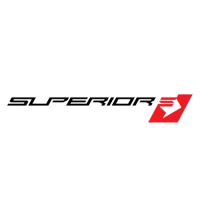Installation & Operation Manual
O-360 and IO-360 Series Engines
2
© March 2004 Superior Air Parts Inc. Chapter 5 • Special Procedures
B. Break-In Ground Run:
(1.) Flight propeller may be used if test club is
not available.
(2.) Head aircraft into the wind.
(3.) Start engine and observe oil pressure. Oil
pressure should be indicated within 30 seconds.
If this does not occur, shut down engine and
determine cause.
(4.) Run engine just long enough to confirm all
components are properly adjusted and secured.
There must be no fuel and/or oil leaks.
(5.) Install cowling.
(6.) Operate engine at 1000 -1200 RPM until oil
has reached minimum operating temperature
120 °F.
(7.) Check magneto drop at normal RPM.
(8.) If engine is equipped with a controllable
pitch propeller, cycle only to a 100 RPM drop.
(9.) Shut down engine and check for fuel and/or
oil leaks and repair any discrepancies.
(10.) At no time should cylinder head
temperature be allowed to exceed
recommended maximum cruise limit of 430°F.
C. Break-In Flight Operation:
(1.) Perform normal pre-flight and run-up in
accordance with Chapter 6 Section 3
(remember: cycle controllable pitch prop to only
a 100 RPM drop). Keep ground runs to a
minimum.
(2). Conduct normal take-off at full power, full
rich mixture, to a safe altitude.
Note:
In certain geographic locations and
weather conditions (eg; high density altitudes)
“Full Rich” operation may not be practical. In
this event, substitute the requirement of “Full
Rich” as discussed in this chapter with the
“richest practical setting”.
(3.) Lean fuel mixture and maintain shallow
climb. Use caution to not overheat the cylinders.
Should overheating occur, reduce power and/or
enrichen mixture.
(4.) Monitor RPM, oil pressure, oil temperature
and cylinder temperature.
(5.) During the first hour of operation, maintain
level flight at 75% power. Vary the power
setting every 15 minutes during the second hour
between 65-75%.
(6.) Avoid long descents at cruise RPM and low
manifold pressure (could cause ring flutter).
(7.) Continue flying at 65-75% power and full
rich mixture on subsequent flights, while
monitoring RPM, Oil Pressure, Oil Temperature,
Cylinder Head Temperature and oil
consumption. Continue until oil consumption
stabilizes and cylinder head temperatures drop
(and stabilize). These are indications that the
piston rings have seated and the cylinders are
broken in.
(8.) At no time should cylinder head temperature
be allowed to exceed recommended maximum
cruise limit 430°F.
(9.) After landing, check again for any fuel
and/or oil leaks, or other discrepancies, and
repair.
D. Post Break-In Procedures:
(1.) After break-in, drain all mineral oil. Examine
this oil for foreign matter or metal particle
content.
(2.) Install ashless dispersant of the appropriate
grade for the expected normal operating
conditions and ambient temperature.

